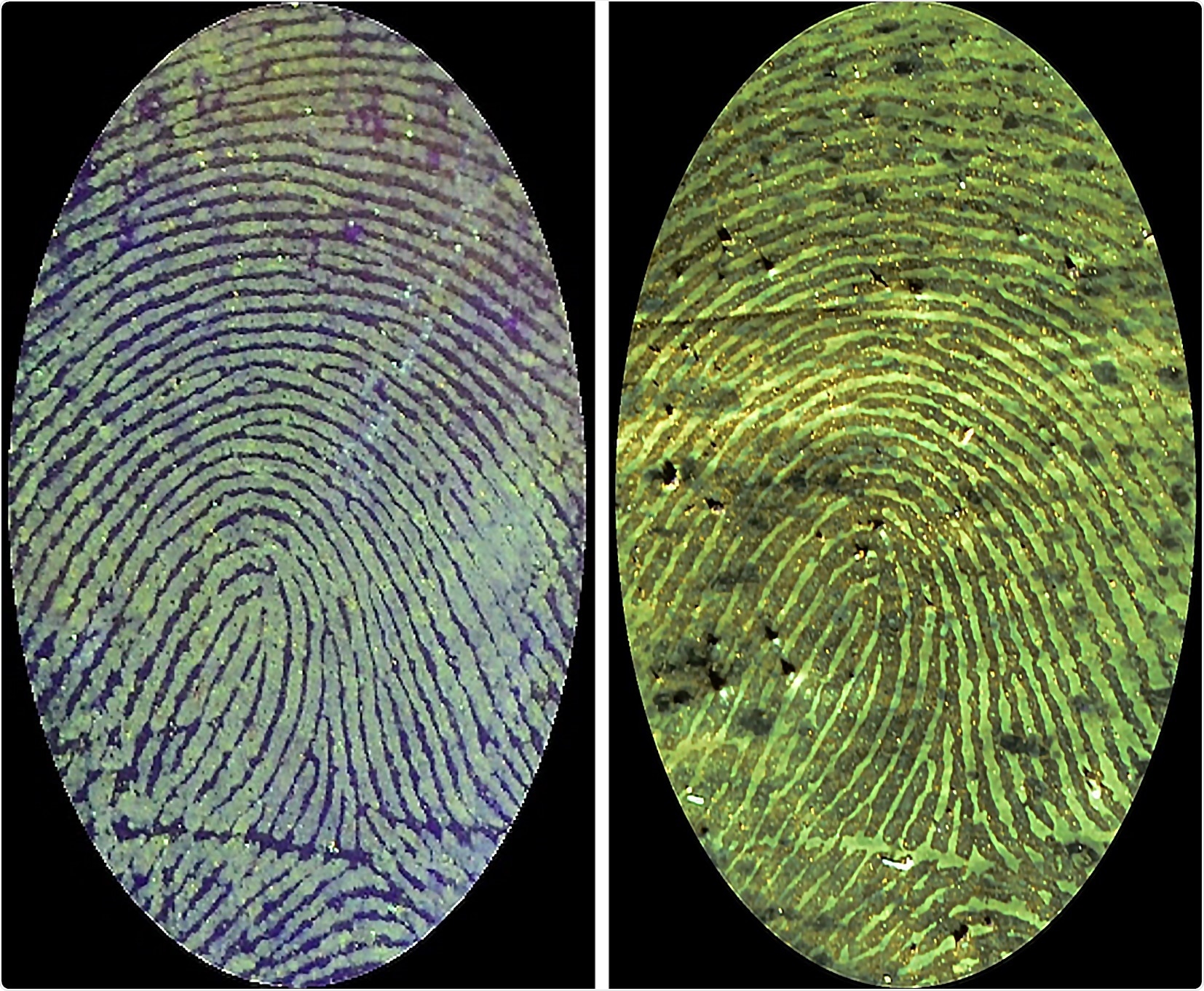Criminals who are very cautious often clean a crime scene by wiping away visible blood and fingerprints. But prints formed of trace amounts of blood, which are invisible to the naked eye, could still be there.

Fingerprint patterns made in the blood are clearly visible on aluminum foil (left) and painted wood (right) when developed with a fluorescent polymer. Image Credit: Adapted from ACS Applied Materials & Interfaces 2021.
Although dyes can be used to detect such hidden prints, they do not work well on some surfaces. Scientists have now created a fluorescent polymer that makes high-contrast images by binding to blood in a fingerprint—without any damage to DNA also found on the surface. The polymer has been described in ACS Applied Materials & Interfaces.
Fingerprints constitute crucial forensic evidence since their loops, whorls, and arches are exclusive to each person. These patterns do not change with aging. During violent crimes, the fingerprints of a culprit inked in the blood can be difficult to visualize, specifically if they attempt to clean the scene.
Therefore, researchers often use dyes to unravel such pieces of evidence. However, a few of them necessitate complex methods to create the images, and busy backgrounds can muddle the investigation. Moreover, certain textured surfaces like wood make identification very difficult.
Fluorescent compounds can improve the contrast between fingerprints and the surface on which they get deposited. But achieving a good, stable image requires these molecules to form strong bonds with molecules found in the blood.
Thus, Li-Juan Fan, Rongliang Ma, and colleagues intended to develop a simple means to bind a fluorescent polymer to blood proteins to enable them to detect clear fingerprints on several different surfaces.
The team altered a yellow-green fluorescent polymer developed earlier by them by adding a second amino group. This enabled the formation of stable bonds between the polymer and blood serum albumin proteins.
The polymer was dissolved and absorbed into a cotton pad, which was positioned on top of prints made of chicken blood on different surfaces, for example, painted wood, aluminum foil, and multicolored plastic.
The pad was peeled off after a few minutes and allowed to air-dry. All of the surfaces exhibited high contrast between the background and blood under blue-violet light and unraveled details, such as sweat pores, ridge endings, whorls, and short ridges.
These delicate patterns could be differentiated when the prints were contaminated with dust and mold. The patterns lasted for at least 600 days in storage. In a different set of experiments, a piece of human DNA was found to remain intact after being combined with the polymer. This indicates that any genetic material identified after processing a print could still be investigated to further identify a suspect, noted the researchers.
Source:
Journal reference:
Fan, Z., et al. (2021) Highly Stable, Nondestructive, and Simple Visualization of Latent Blood Fingerprints Based on Covalent Bonding Between the Fluorescent Conjugated Polymer and Proteins in Blood. ACS Applied Materials & Interfaces. doi.org/10.1021/acsami.1c00710.